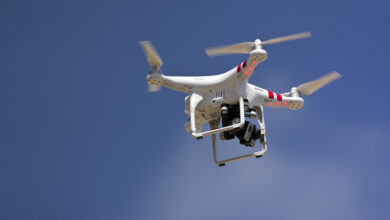Last Updated on January 2, 2020 12:33 pm
RALEIGH – Two new cameras recently added to Civil Air Patrol aircraft in North Carolina are providing a significant improvement to the state’s aerial search capability.
Technicians recently installed forward-looking infrared (FLIR) cameras on two Cessna 182 aircraft operated by the North Carolina Wing of the Civil Air Patrol. One plane is based at Triangle North Executive Airport in Louisburg and the other is based at Asheville Regional Airport. The cameras are equipped with both regular optical lenses and heat-sensing infrared technology.
“This turns aerial search into a round-the-clock mission for the Civil Air Patrol, instead of a daytime only mission,” said Lt. Col. Rich Tedesco, deputy commander of the Civil Air Patrol Franklin County Composite Squadron NC-145, which operates one of the planes.
The heat-sensing capability of the FLIR camera helps to locate missing persons and downed aircraft from the air, in daylight or darkness, so ground rescue teams can then be directed to the site. Since the State Highway Patrol has the same FLIR capability on helicopters, adding the FLIR cameras on Civil Air Patrol aircraft increases interoperability between the two agencies. Additionally, the small fixed-wing planes have lower operating costs and can remain aloft for extended periods of time before refueling.
Since images from the cameras can be live streamed back to emergency officials, they are an excellent tool for instant situational awareness and damage assessment. The cameras were purchased and installed with federal Homeland Security grant funds. The Civil Air Patrol is currently training members on the cameras and developing 24-hour on-call schedules for its aircrews so the planes and personnel are ready to respond whenever needed.
The Civil Air Patrol is an auxiliary of the United States Air Force and operates a fleet of 17 small aircraft in North Carolina. Its North Carolina Wing operates as a section of North Carolina Emergency Management, performing search and rescue, air transport and aerial photography missions for the State Emergency Response Team. It also operates a cadet program that provides leadership, aerospace education and emergency services training for young people.

















